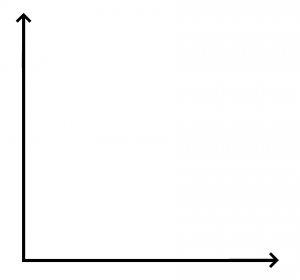Appendix III. Mathematics
It is helpful to review some key concepts from high school mathematics to prepare for this course. These are concepts that are generally covered in schools in Saskatchewan in Grade 10 science class (or earlier). This appendix contains outcomes, vocabulary, and review questions in mathematics.
Note that this appendix is not intended to re-teach you high school math; it provides guidance on aspects of high school math that will be useful as background for this introductory physical geology course. If you are struggling with these concepts please approach your instructor to chat about other resources to help you.
AIII-1. Outcomes
After reviewing this appendix the learner should be:
- familiar with key mathematics vocabulary and be able to use these words in sentences.
- able to draw acute, right, and obtuse angles, and know the difference between parallel and perpendicular lines.
AIII-2. Vocabulary
Review this list of vocabulary. Try to define each on out loud, and create a sentence using each word in context. You may look them up on Wikipedia if you need help remembering their meaning.
- perpendicular
- angle
- acute angle (low angle)
- right angle
- left
- right
- parallel
- geometry
- greater than
- less than
- equal to
- plus
- minus
- formula
- notation
- unit
- vertical
- horizontal
- scale
- continuous
- discontinuous
- order of magnitude
- linear
- symmetrical
- asymmetrical
- straight
- curved
- thin
- thick
- radius /radii
- diameter
- subscript
- superscript
- symbol
- size
- shape
- circle / circular
- ellipse / elliptical
- cylinder / cylindrical
- sphere
- square
- cube
- rectangle
- triangle
- pyramid
- prism
- range
- 90 degrees (90˚)
- two dimensional (2-D)
- three dimensional (3-D)
- one dimensional (1-D)
- times (e.g., 10,000 times, or 10,000 x)
- scientific notation (e.g., 3 cm = 3 x 10^-2 m or 3 x 10-2 m)
- dimensions (length, width, height)
- adjacent
- orientation
- interior
- exterior
- proportion
- bisect
- graph
- horizontal axis
- vertical axis
- graph scale
- average / mean
- center / centre
- logarithmic scale
AIII-3. Review Questions
Geometry
- What is the word and symbol used to describe an angle (if you are writing the value for an angle in a sentence)? E.g., a 90 ______ angle.
- What is the symbol for angle if you are drawing an angle?
- What is the angle between two perpendicular lines?
- What is a right angle?
- Draw a right angle triangle.
- What is the symbol for an angle that is perpendicular?
- What is the angle between two parallel lines?
- What are some examples of surfaces that are parallel that you interact with in your daily life?
- What are some examples of surfaces that are perpendicular that you interact with in your daily life?
- Label the following objects as two-dimensional (2-D) or three-dimensional (3-D). Draw an example of each of these objects.
- rectangle
- square
- sphere
- circle
- triangle
- pyramid
Units and conversations
- What is the mathematical symbol for:
- greater than
- less than
- equal to
- What is the abbreviation for millimeter? centimeter? kilometer?
- Pick a unit scale that would be appropriate for measuring each of the following (mm, cm, m, or km). Estimate (roughly) the width of each.
- your foot
- the building you live in
- the city of Saskatoon
- your thumbnail
- the width of an eyelash
- the diameter of grains of sand
- What is the scientific notation in metres (m) for each of the following:
- 10,000 cm
- 100 m
- 0.0001 km
- 3,300 mm
- 0.00051 cm
- convert each of the following into metres (m):
- 10 km
- 1000 cm
- 1 mm
Graphing and graph interpretation practice
- Calculate the average (mean) of the following numbers:
- 2, 10, 5, 6
- 2, 10, 5, 6
- Draw a graph showing the months of the year on the x axis, and the average number of steps per day you walk per day in each month on the y axis (you can get steps data directly from your cell phone health application). Alternatively, you could estimate your average steps per day for each month at three levels: high, medium, and low. Don’t forget to add a legend and labels for your axes, and units for the y axis. Note: If you aren’t sure which axis is the x-axis, and which is the y-axis, check on Wikipedia.
-
- What does the graph tell you about your walking patterns seasonally?
- Look up the average monthly temperature data for Saskatoon on Wikipedia, Graph the average monthly temperature (y-axis) against the month.
-
- What is the pattern of this graph? Is there a relationship between this and your walking patterns over the course of a year?
- Have a look at this illustration comparing energy use in households across Canada. Create an x-y graph representing the data in the illustration. Note: there are a few different ways you could plot this data, I have provided three x-y graphs so you can try plotting the data in different ways. How does the plot you make influence how you interpret the data in your graph?


